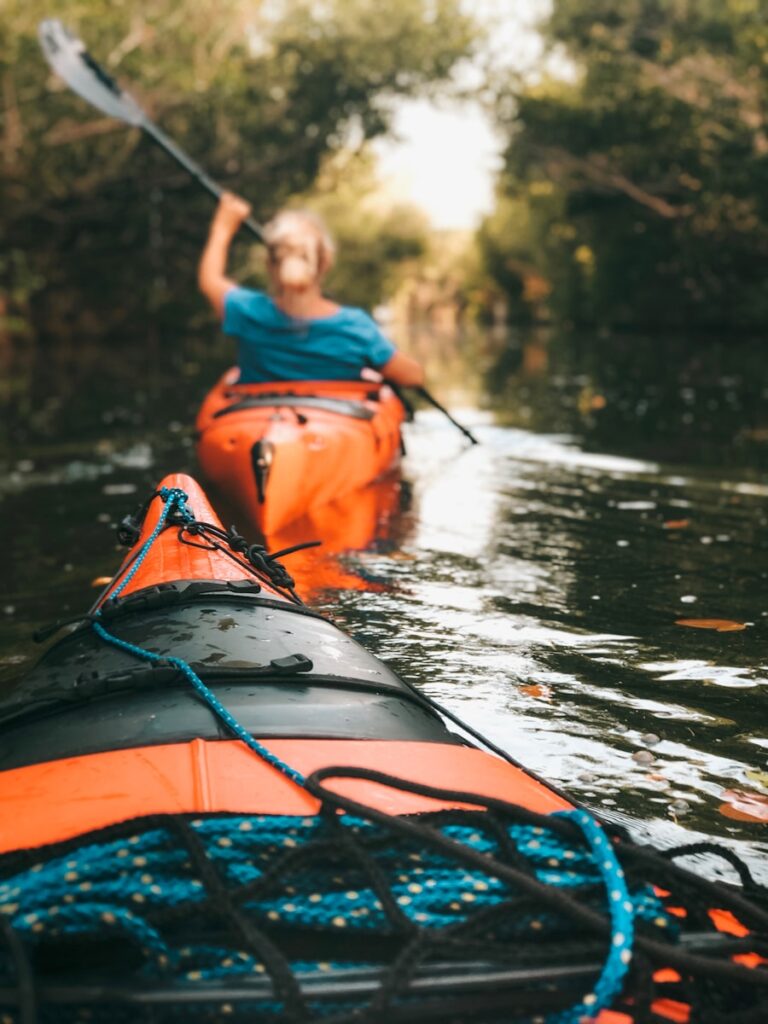Adventure travel isn’t a game. It should never really be about tallying up miles on a map. I would suggest it should be about what those miles mean. The “why” is where the value lies: connecting with people and places in ways that surprise you, contributing to the stewardship of wild lands, challenging your own limits, creating stories worth retelling, and celebrating life with unforgettable moments. Each trail, river, sky, and small town diner offers a chance to deepen your perspective, not just expand your mileage. That’s the real fuel behind adventure travel—and the reason these experiences matter long after the trip is done.
Use this list to add purpose to your routes, variety to your camps, and stories to your life.
- Stargazing & Night-Sky Hunts – Reconnect with the cosmos; it’s humbling and unforgettable. Scout certified dark-sky areas with DarkSky and watch short-term aurora forecasts via NOAA’s Aurora Map. (Great for time-lapse night photography, too.) (PADI, NOAA Space Weather Prediction Center)
- Trail Clean-Ups – Leave places better than you found them; it builds local goodwill and keeps access open. Plug into stewardship projects with Tread Lightly! or their volunteer programs. (Tread Lightly!)
- Geocaching – Turn any waypoint into a treasure hunt. Start at Geocaching.com and add a low-stakes challenge to hike days.
- Birdwatching (with Apps) – Notice more, learn faster. Log sightings to eBird and ID calls with Merlin Bird ID. You’ll join a global citizen-science effort while you explore. (Birds, Cornell Lab of Ornithology, merlin.allaboutbirds.org)
- Kayaking or Pack-Rafting – See canyons and shorelines from the waterline. Check flows with USGS Water Data, river intel via American Whitewater, and skill training through the American Canoe Association. (USGS Water Data, Divers Alert Network, caves.org)
- Foodie Field Trips – Hit farmers’ markets, mom-and-pop diners, and regional specialties. Ask locals; take notes for your own “road eats” guide.
- Caving (Spelunking) – Explore safely with training, three light sources, and local rules. Start with NPS cave-safety basics and gear tips, then read up on decontamination for White-Nose Syndrome. NPS cave safety • NSS decon PDF. (National Park Service, caves.org)
- Shakedown Runs – Test your kit before long expeditions. Use legal routes (check USFS MVUM guidance) and practice Tread Lightly principles to minimize impact. (US Forest Service, Tread Lightly!)
- Family-History Detours – Swing by old homesteads, cemeteries, or county archives. Map research with FamilySearch and let your route tell your story. (FamilySearch)
- Sightseeing via Scenic Byways – Trade interstates for designated routes with cultural, historic, and natural highlights: America’s Byways. (Federal Highway Administration)
- Citizen Science: Weather – Report hail, rain, and storms that help researchers. Try mPING or join CoCoRaHS. (American Whitewater, Zooniverse)
- Citizen Science: Earthquakes – If you feel a quake on the road, contribute to USGS maps with Did You Feel It?. (USGS)
- Citizen Science: Night-Sky Quality – Help measure light pollution with Globe at Night. (globeatnight.org)
- Citizen Science: Biodiversity – Log plants, insects, and critters with iNaturalist (or kid-friendly Seek). You’ll learn your biomes and aid research. (americancanoe.org)
- Hiking With Intention – Pick trails that teach: geology loops, history walks, or interpretive paths. Brush up on low-impact practices with Leave No Trace. (iNaturalist)
- Fishing – Pair quiet mornings with new waters. Check seasons, species, and local regs before you cast (state sites) and log conditions as you learn.
- Open-Water Swimming – Choose lifeguarded areas when possible and respect currents, temps, and weather. Good refreshers: Red Cross Water Safety. (American Red Cross)
- Snorkeling – Scout entry/exit points, tides, and visibility; go with a buddy. DAN’s safety pages are gold: DAN Diver Safety. (Divers Alert Network)
- Scuba Diving – If certified, add reef or spring dives en route; if not, consider a discover-scuba session. Learn standards via PADI and safety resources from DAN. (ODFW, Divers Alert Network)
- Event Attendance – Route through a festival, concert, rodeo, or rally. Overlanders: plan around Overland Expo or a Jeep Jamboree. (Overland Expo®, Jeep Jamboree USA)
- Visit That Long-Lost Cousin – Make family the destination and take the adventurous route between towns. It’s the best excuse for a side-quest.
- Vlogging or Trip Journaling (Photography) – Capture stories for future you (and your audience). YouTube’s creator resources can help with structure and workflow: YouTube Creators. (YouTube)
- Soundscapes Recording – Press “record” at dawn or after dark—frogs, owls, wind in the pines. Learn why parks protect sound as a resource: NPS Natural Sounds. (National Park Service)
- Rockhounding (Where Legal) – Hunt for agates or fossils in approved areas only. Start with BLM guidance: Rockhounding on Public Lands. (Bureau of Land Management)
- Foraging (Permits & Ethics First) – Learn edible plants with a local expert and respect harvest rules. See USFS/BLM permit info: USFS permits • BLM forest products. (US Forest Service, Bureau of Land Management)
- Drone Scouting (Where Allowed) – Aerial views can be epic—only fly legally and respectfully. Check airspace with FAA’s B4UFLY and know recreational rules under 49 U.S.C. §44809. (Federal Aviation Administration, Legal Information Institute)
- Citizen Science: Clouds, Trees, Mosquitoes, Land Cover – NASA’s GLOBE Observer turns road days into data days. (iNaturalist)
- Citizen Science: Join a Global Project – Contribute to research on wildlife, climate, or space with Zooniverse from camp when the weather turns. (PADI)
- Bird Counts & Meetups – Plan winter routes around Audubon’s Christmas Bird Count or local birding hotspots. (Audubon)
- Camp Instead of Cabins – When safe and permitted, choose dispersed camping for a richer experience. Read local rules: USFS region example dispersed camping and BLM camping basics. (US Forest Service, Bureau of Land Management)
- Sunrise/Sunset Challenges – Pick a peak, overlook, pier, or playa every few days. It’s cheap, memorable, and resets your sense of time.
How to Use This List (Fast)
- Pick one from each “why”: Connect (family history), Contribute (clean-ups, citizen science), Challenge (kayak, cave), Create (vlog, soundscapes), Celebrate (events, great meals).
- Seed your map with the links above, then sprinkle in personal goals (e.g., “3 night-skies, 2 water days, 1 volunteer thing”).
My Personal Favs
I’ve enjoyed just about all of these at one time or another. But my favorite activities consistently are hiking, fishing, canoeing (kayaking), rockhounding (so many rocks), and of course – journaling.
Safety & Skill Disclaimer (Read Me)
Some activities above involve risk and/or specialized training (examples: caving, paddling, free/open-water swimming, snorkeling, SCUBA, drone flying). You are responsible for knowing and following local laws, land-manager rules, and best-practice safety guidance, and for obtaining permits, certifications, and gear appropriate to your experience level. Before attempting any technical or water-based activity, consult reputable sources, consider professional instruction, and verify current conditions (weather, water levels, closures). Start here for fundamentals and rules of thumb:
- Low-impact travel & camp: Leave No Trace, Tread Lightly!. (iNaturalist, Tread Lightly!)
- Water safety & swim skills: American Red Cross. (American Red Cross)
- Paddling training & river intel: ACA, American Whitewater. (caves.org, Divers Alert Network)
- Caving safety & decon: NPS cave safety, NSS WNS decon. (National Park Service, caves.org)
- Drone rules & airspace: FAA B4UFLY, Recreational 44809. (Federal Aviation Administration, Legal Information Institute)
- Snorkel/SCUBA safety: DAN, training via PADI. (Divers Alert Network, ODFW)
Here’s to the road unpaved! – Doug

